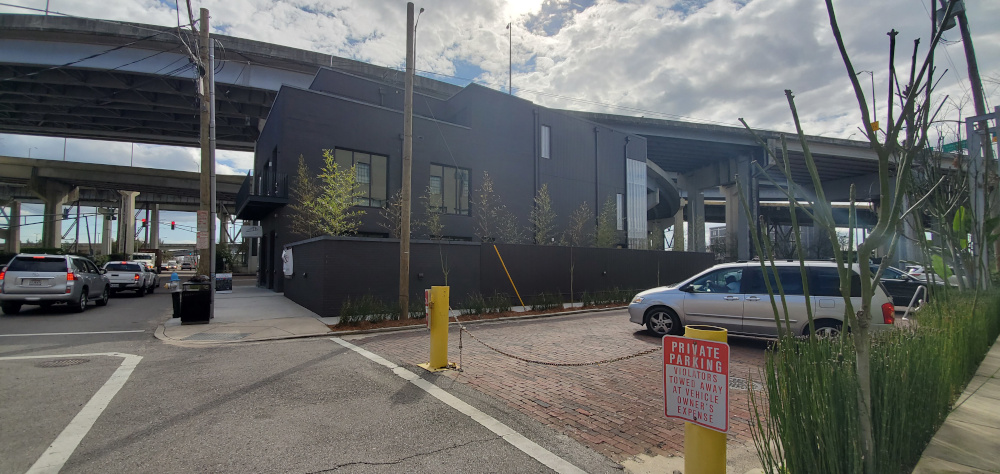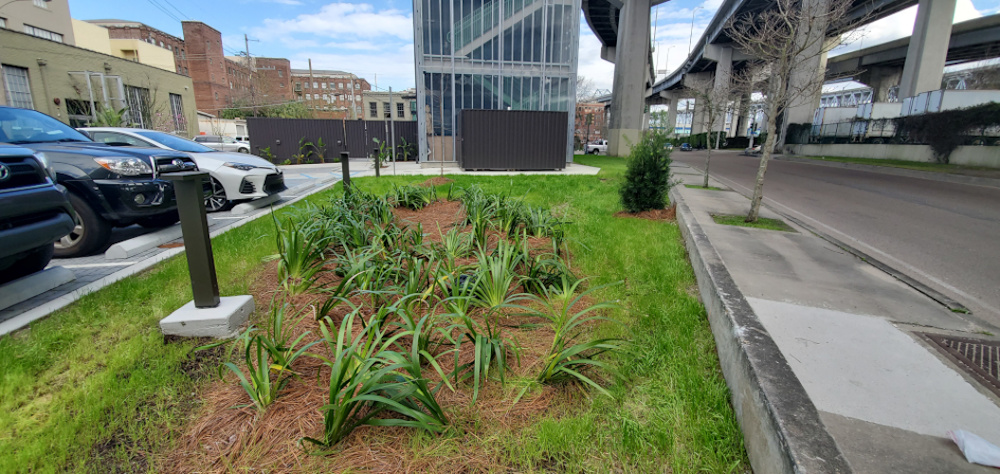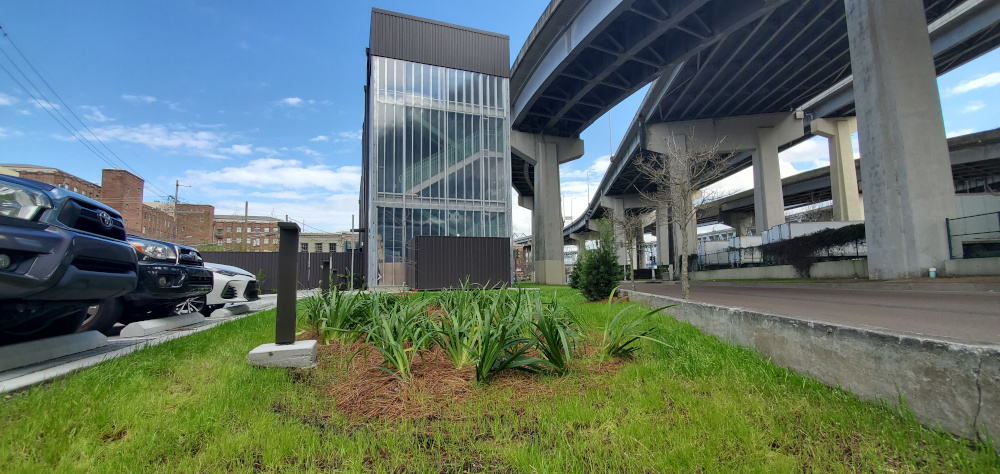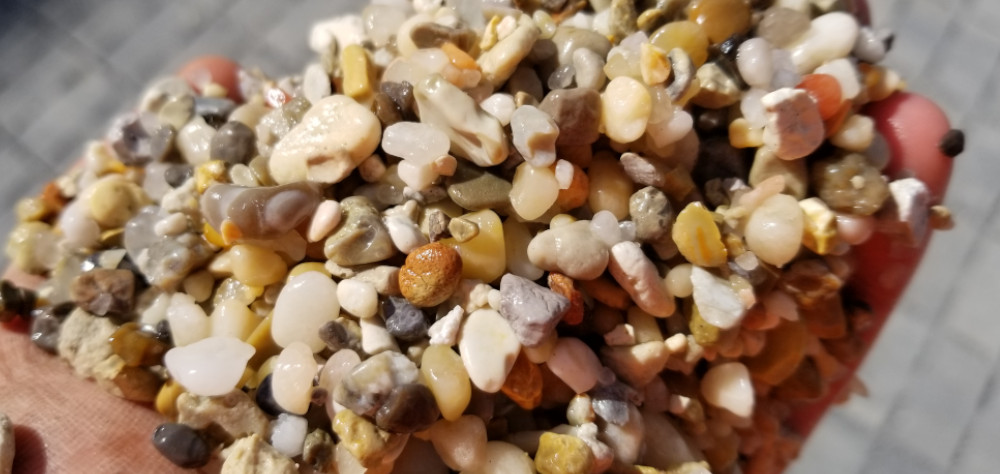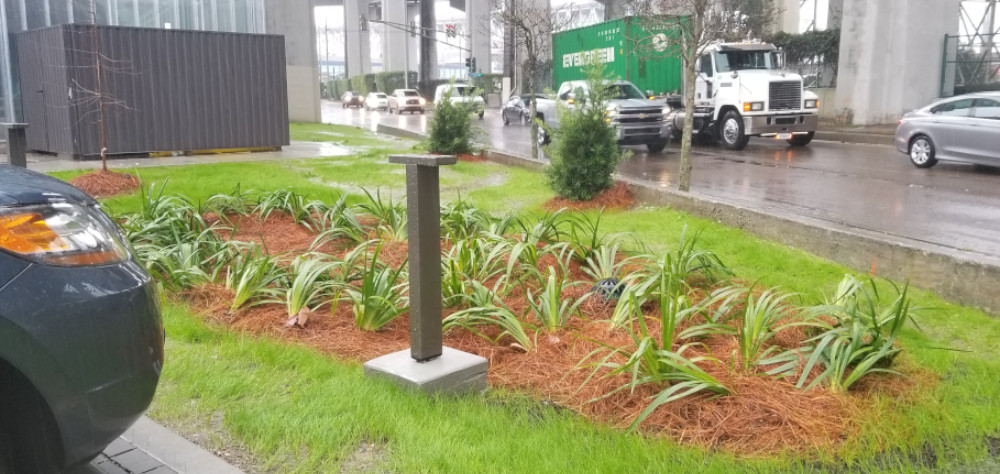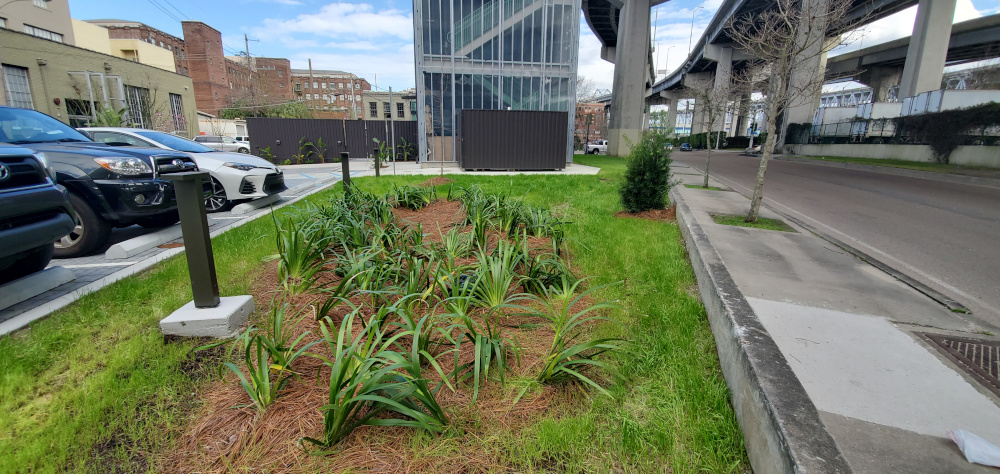
A GSI Combination Perfect for Tight Spaces
The biggest transformation of New Orleans’ historic riverfront in more than 30 years is underway – with plans to build new parks, hotels, housing and businesses in various stages of development. This spur in development along the riverfront has encouraged local business owners to expand. 30 years ago, stormwater management meant something totally different than it does in 2020. The big difference is how the first flush of stormwater runoff is managed.
The current ordinance in New Orleans requires developments over 5,000 SF to detain and treat that first flush with a variety of stormwater management solutions. Green Stormwater Infrastructure (GSI) such as permeable pavers and bioretention / biofiltration are the favored solutions since they are the most visible to the community. A vacant lot next on the corner of Tchoupitoulas and Calliope was going to be a challenge to develop into a new eatery and bar in the Warehouse District. The surrounding environment isn’t the most conducive to GI; an elevated expressway on one side and buildings on the other two sides with endless amounts of impervious cover in all directions. The elevated expressway casts long shadows throughout most of the year but doesn’t provide relief from rainfall.
Kyle and Associates collaborated with Construction EcoServices (CES) on the stormwater management design. The space available for permeable pavement and bioretention wasn’t much, just a small strip of space behind the building and another area in front of the parking stalls. Permeable Interlocking Permeable Pavers were used in the stalls, which helped manage the rainfall that landed on them. Small lots also make construction a challenge, which is why minimizing the footprint of the bioretention system was a priority. CES recommended using FocalPoint, a high performance bioretention system that manages large volumes of runoff within a small space. It consists of an open cell underdrain, bridging stone, high flow engineered soil, mulch and plants. It infiltrates surface runoff at 100”/hr, which is much faster than a typical bioretention soil mix. The high flow rate minimizes the footprint of the system and provides consistent performance, even when not maintained properly.
FocalPoint’s fundamental TR-55 rainfall and distribution approach accounts for every drop of rainfall that flows through the system. This method of sizing provides computations as to where every cubic foot of runoff is at any time during the rainfall runoff event. The ability to leverage the size of the FocalPoint treatment footprint within a surface depression or landscape area for temporary storage allows for the unique scalability of the system. This model is valuable to designers because it satisfies permitting requirements, enables robust design and provides adequate space for pretreatment. The result for this project was a 40 square foot FocalPoint system.
One important step during CES’s installation is protecting the engineered soil prior to the site being vegetated. The entire system is wrapped with a geotextile to prevent clogging from construction sediment. Storm events are common in the Gulf coast and adequate stormwater pollution prevention ensures GI won’t fail. Before the FocalPoint system was planted, CES tested the infiltration rate of the soil to ensure it hadn’t clogged. One of the many values that the designer, General Contractor and owner benefit from is a performance-driven specification.
This urban bioretention system has already been hard at work. Multiple heavy storm events have tested its resilience and the results have been fantastic. It even survived its first Mardi Gras!
Challenges
- New Orleans requires developments over 5,000 SF to detain and treat that first flush
- Little available footprint for stormwater management – an elevated expressway on one side / buildings on the other two sides / endless amounts if impervious cover in all directions
Solution
- Permeable Interlocking Permeable Pavers were used in the stalls
- FocalPoint, a high performance bioretention system that manages large volumes of runoff within a small footprint
